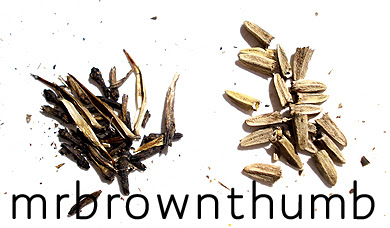
Purple Echinacea takes at least 3 to 4 months to start producing flowers depending on the time of year the seeds were sown. Purple Echinacea germination can be erratic, with seedlings taking anywhere between 5 and 20 days to emerge after sowing. You can do this by mixing the seeds with damp (not dripping wet) sand in a zip-lock bag and placing them into the fridge for 1 week prior to sowing them out. If the germination rate of your Echinacea seeds is low you may be able to break their dormancy by cold stratifying them. Sow Purple Echinacea seeds 4mm deep spacing plantings about 17cm apart to give them room to grow. Sow Purple Echinacea seeds from August to October or from February to April for best results. Deadheading your Echinacea plants will encourage them to produce additional flowering stems and maintain a compact growth habit.


If you're not collecting the seeds, deadhead your Echinacea plants but cutting off the old flowers just above the point where their stems emerge from the foliage. Echinacea will eventually form large clumps after a few years of growth which can be divided and planted in other parts of your garden. Place mulch around your Echinacea plants to keep their root systems cool and suppress weed growth. Echinacea is hardy and will survive reasonable periods of drought once established, but with also thrive with regular watering. Echinacea only needs to be fertilised sporadically, once a year in Spring with an organic fertiliser is best or more often if nutrient deficiencies are apparent. Dig lots of organic matter through yours garden beds a few weeks prior to sowing including a mix of well-rotted manures, compost and worm castings, this will improve the health of your soil and provide your Echinacea plants with the nutrients they need for healthy growth. Echinacea prefers growing in a sandy loam soil, try growing it in raised garden beds with imported soil if your natural soil is too compacted or heavy with clay.

#Purple coneflower seeds germination skin
Echinacea used medicinally may cause gastrointestinal upset and can cause severe reactions including anaphylaxis, asthma attacks or skin rashes in people who are allergic to it, so care should be taken if using it.Įchinacea will grow best in a location that receives full sun but it will also tolerate light shade. Extracts obtained from this species of Echinacea are commonly used in modern commercial cold and flu relief tablets in combination with other ingredients. Echinacea roots were also chewed to help relieve sore throats, colds, flu and toothache. Echinacea leaves were used in traditional Native American medicine and were mashed up and prepared as a poultice to treat and relieve insect bites and stings as well minor burns and skin wounds. Echinacea plants will help to attract a range of beneficial insect predators and pollinators to your garden and are particularly favoured by a range of tiny caterpillar-parasitic wasp species. Purple Echinacea is an open-pollinated variety meaning that you can collect the seeds that your plants produce and they'll grow true to type.Įchinacea can be grown as a bedding plant for their flowers which add vibrant colour to your garden. The flowers have a ring of pinkish-purple petals with a tall, orange coloured, central cone. Purple Echinacea is a perennial flowering plant native to parts of eastern North America. Common Names: Echinacea 'Purpurea', Purple Echinacea, Purple Coneflower, Eastern Purple Coneflower


 0 kommentar(er)
0 kommentar(er)
